- Home›
- Hunger Struck›
- Collection Of Janmashtami Sweets Recipes
Collection Of Janmashtami Sweets Recipes
By: Priyanka Maheshwari Sun, 25 Aug 2024 7:03:44

Janmashtami, the joyous celebration of Lord Krishna's birth, is a time of devotion, festivity, and culinary delight. One of the most cherished aspects of this festival is the preparation of traditional sweets, which are offered to Lord Krishna and shared with loved ones. These delicacies, made with love and devotion, reflect the essence of Indian culture and the joy of the occasion. From creamy milk-based treats to aromatic laddoos, Janmashtami sweets are a blend of rich flavors and textures that are as delightful to taste as they are to make. In this collection of Janmashtami sweet recipes, you'll find a variety of traditional favorites, perfect for adding sweetness to your celebrations. Whether you're looking to recreate age-old classics or try something new, these recipes will guide you in preparing delicious sweets that honor the spirit of Janmashtami.
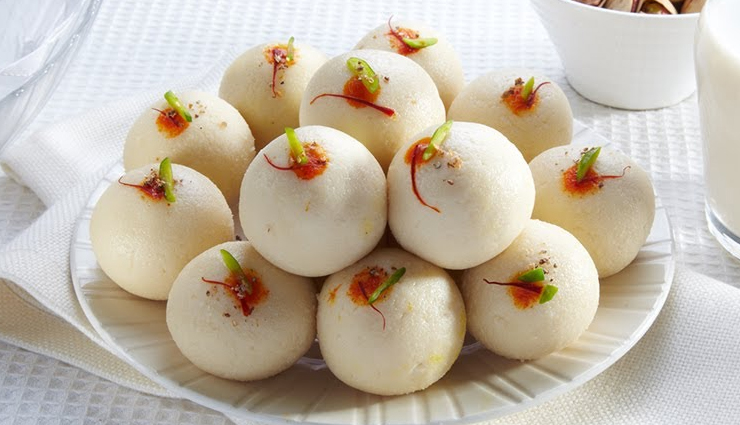
# Milk Powder Ladoo
Milk powder ladoo is a delightful Indian sweet that’s both easy to prepare and absolutely delicious. These bite-sized treats are perfect for festivals, celebrations, or just as a quick dessert to satisfy your sweet tooth. Here’s a simple recipe that you can whip up in no time.
Ingredients of Milk Powder Ladoo
1 cup milk powder
1/2 cup sugar
1/4 cup ghee (clarified butter)
1/4 cup milk
1/4 teaspoon cardamom powder
A handful of chopped nuts (optional): Almonds, cashews, and pistachios
A pinch of saffron strands (optional)
How to Make Milk Powder Ladoo
To make delicious milk powder ladoos, start by heating ghee in a non-stick pan over low to medium heat until it melts completely. Once the ghee is ready, add milk powder to the pan, stirring continuously to ensure it mixes well with the ghee. Next, gradually pour in the milk while stirring to create a smooth, lump-free mixture. Continue stirring until the mixture thickens and starts to leave the sides of the pan. At this stage, add sugar and cardamom powder, stirring until the sugar dissolves completely and the mixture becomes aromatic. If you want to add a luxurious touch, soak a few saffron strands in a tablespoon of warm milk and mix them in.
Keep cooking the mixture on low heat until it thickens further and forms a dough-like consistency. This should take about 5 to 7 minutes. Once the mixture reaches the right consistency, remove it from the heat and allow it to cool slightly. Grease your hands with a little ghee, then shape the mixture into small, round ladoos. If you're using nuts, press a few pieces into each ladoo as you shape them. Finally, garnish the ladoos with chopped nuts or a sprinkle of saffron strands. Let them cool completely before serving or storing them in an airtight container. These milk powder ladoos are quick, easy to make, and absolutely delicious!
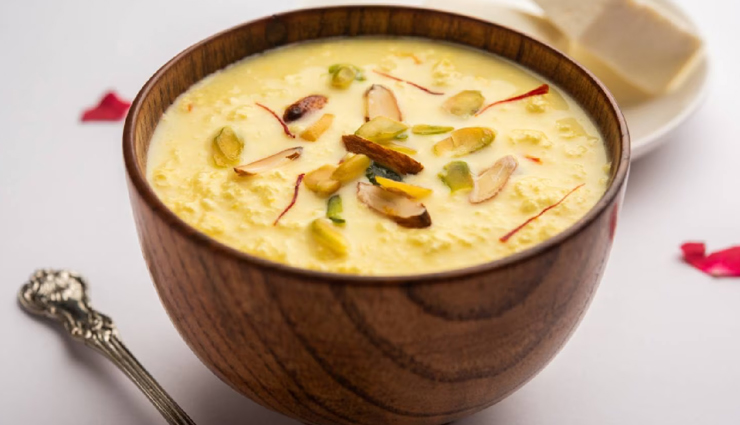
# Paneer Kheer
Paneer kheer is a rich and creamy Indian dessert made with fresh paneer, milk, and aromatic spices. This delicious treat is perfect for festive occasions or when you want to indulge in something sweet. Here’s a simple recipe to make this delightful kheer at home.
Ingredients of Paneer Kheer
1 liter full cream milk
200 grams paneer (cottage cheese)
1/2 cup sugar
1/4 teaspoon cardamom powder
A handful of chopped nuts: Almonds, cashews, and pistachios work well.
A few saffron strands (optional)
2 tablespoons condensed milk (optional)
How to Make Paneer Kheer
To prepare paneer kheer, start by bringing one liter of full cream milk to a boil in a heavy-bottomed pan over medium heat. Once the milk begins to boil, reduce the heat and allow it to simmer, stirring occasionally to prevent the milk from sticking to the bottom of the pan. After the milk has reduced slightly, add 200 grams of freshly crumbled paneer to the pan, ensuring that it blends smoothly with the milk without forming lumps. Next, add half a cup of sugar, stirring continuously until it completely dissolves. If you prefer a richer texture, you can also add two tablespoons of condensed milk at this stage.
For added flavor, sprinkle in a quarter teaspoon of cardamom powder and a few saffron strands that have been soaked in warm milk. Continue to cook the mixture on low heat, stirring occasionally, until the kheer thickens to your desired consistency, which should take about 10-15 minutes. The paneer should be well incorporated, giving the kheer a creamy, smooth texture. Stir in a handful of chopped nuts like almonds, cashews, and pistachios, reserving a few for garnish. Once the kheer reaches the desired thickness, remove it from the heat and allow it to cool slightly. You can serve paneer kheer either warm or chilled, depending on your preference. Before serving, garnish with the reserved nuts and a few saffron strands for a final touch. Enjoy this rich and creamy dessert with your loved ones!
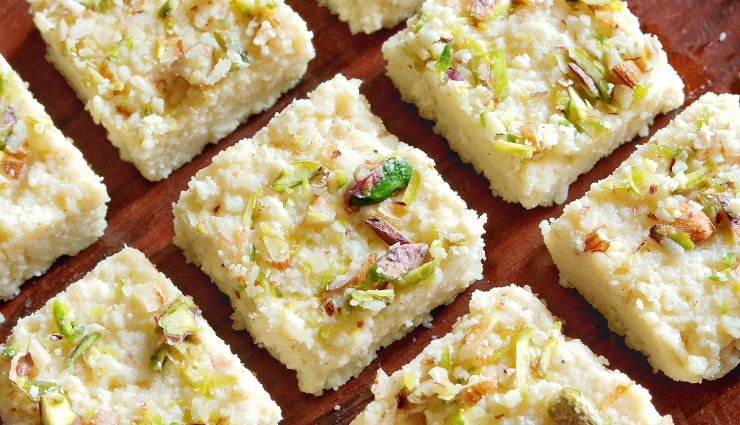
# Kalakand recipe
Kalakand is a popular Indian dessert made from reduced milk, sugar, and cardamom. Known for its rich, grainy texture and delicious taste, Kalakand is a perfect treat for festivals and special occasions. Here’s a simple recipe to make this delightful sweet at home.
Ingredients of Kalakand recipe
1 liter full cream milk
200 grams paneer (cottage cheese)
1/2 cup sugar
1/4 teaspoon cardamom powder
A handful of chopped nuts: Almonds, pistachios, and cashews for garnish.
1 teaspoon ghee
How to Make Kalakand recipe
To make Kalakand, start by boiling one liter of full cream milk in a heavy-bottomed pan over medium heat. Keep stirring the milk occasionally to prevent it from sticking to the bottom of the pan. Once the milk comes to a boil, reduce the heat and let it simmer until it reduces to half its original quantity. This process may take around 20-30 minutes.
Meanwhile, crumble 200 grams of fresh paneer and set it aside. Once the milk has reduced, add the crumbled paneer to the pan, stirring well to ensure that the paneer is evenly distributed. Continue to cook the mixture on low heat, stirring constantly to prevent it from burning. As the mixture thickens, add half a cup of sugar and a quarter teaspoon of cardamom powder. Stir the mixture until the sugar dissolves completely and the Kalakand mixture starts to leave the sides of the pan.
Once the mixture has thickened to a soft, grainy texture, remove it from the heat. Grease a shallow dish or tray with a teaspoon of ghee, then pour the Kalakand mixture into the dish, spreading it evenly. Sprinkle a handful of chopped nuts like almonds, pistachios, and cashews over the top for garnish. Allow the Kalakand to cool completely at room temperature, then refrigerate it for about an hour to set.
Once the Kalakand is set, cut it into squares or diamond shapes and serve. This traditional Indian milk cake is rich, creamy, and perfect for celebrating any special occasion. Enjoy!
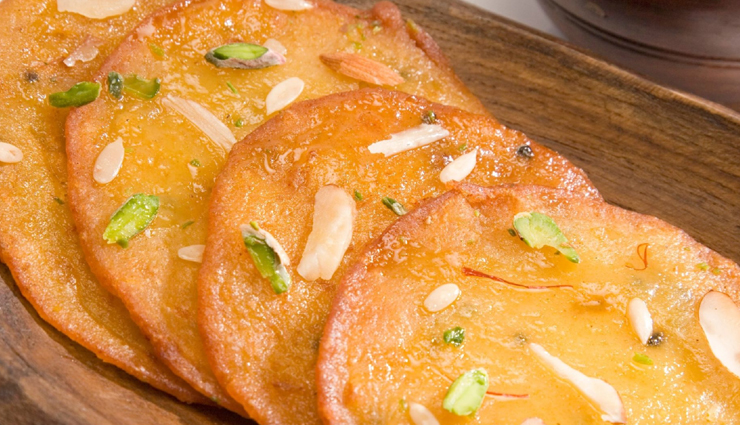
# Instant Malpua
Malpua is a popular Indian dessert that’s often made during festivals like Holi and Diwali. These sweet, deep-fried pancakes are soaked in sugar syrup and flavored with cardamom, making them a delicious treat. Here’s an easy and instant recipe to make Malpua at home.
Ingredients of Instant Malpua
1 cup all-purpose flour (maida)
1/4 cup semolina (sooji/rava)
1/4 cup milk powder
1/2 cup milk
2 tablespoons sugar
1/4 teaspoon fennel seeds (saunf)
1/4 teaspoon cardamom powder
Ghee or oil for frying
For the Sugar Syrup:
1 cup sugar
1/2 cup water
A few saffron strands (optional): For added flavor and color.
1/4 teaspoon cardamom powder
How to Make Instant Malpua
To prepare instant Malpua, start by making the batter. In a mixing bowl, combine one cup of all-purpose flour, a quarter cup of semolina, and a quarter cup of milk powder. Add two tablespoons of sugar, a quarter teaspoon of fennel seeds, and a quarter teaspoon of cardamom powder to the dry ingredients. Gradually pour in half a cup of milk while whisking the mixture to form a smooth, lump-free batter. The batter should have a consistency similar to pancake batter. Let it rest for about 10-15 minutes.
While the batter is resting, prepare the sugar syrup. In a saucepan, combine one cup of sugar and half a cup of water. Heat the mixture over medium heat, stirring until the sugar dissolves completely. Add a few saffron strands and a quarter teaspoon of cardamom powder to the syrup for extra flavor. Allow the syrup to simmer until it reaches a one-string consistency, then turn off the heat and set it aside.
To fry the Malpuas, heat ghee or oil in a deep frying pan over medium heat. Once the oil is hot, pour a small ladleful of batter into the oil, spreading it out slightly to form a small pancake. Fry the Malpua until it turns golden brown and crispy on both sides, then remove it from the oil and drain on paper towels to remove excess oil. Immediately dip the hot Malpua into the warm sugar syrup, allowing it to soak for a minute or two.
Once the Malpua has absorbed the syrup, remove it and place it on a serving plate. Repeat the process with the remaining batter. Garnish the Malpuas with chopped nuts or a sprinkle of saffron strands, if desired. Serve warm and enjoy this delicious, quick-to-make treat with your family and friends!
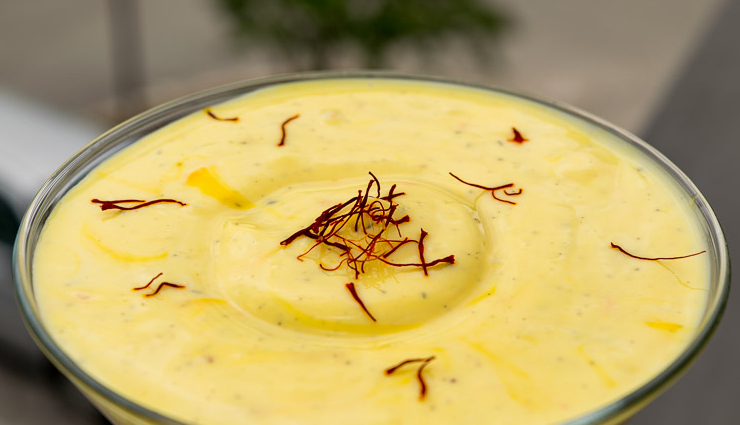
# Kesar shrikand
Kesar Shrikand is a traditional Indian dessert made from strained yogurt (hung curd) and flavored with saffron (kesar) and cardamom. This rich and creamy treat is often enjoyed during festivals and special occasions. Here’s how you can make Kesar Shrikand at home with minimal ingredients and effort.
Ingredients of Kesar shrikand
2 cups thick yogurt (curd)
1/2 cup powdered sugar
A few saffron strands (kesar)
1/4 teaspoon cardamom powder
1 tablespoon chopped nuts: Almonds, pistachios, and cashews for garnish.
1/2 teaspoon rose water (optional)
How to Make Kesar shrikand
To prepare Kesar Shrikand, start by making hung curd. Place a muslin cloth or a clean kitchen towel over a strainer, then add 2 cups of thick yogurt to the cloth. Tie the cloth tightly and hang it over a bowl to allow the excess water to drain out. Let it hang for at least 4-5 hours, or preferably overnight, until the yogurt thickens and becomes creamy.
Once the yogurt has drained and thickened, transfer it to a mixing bowl. Add half a cup of powdered sugar to the yogurt, and mix well until the sugar is fully incorporated and the mixture becomes smooth and creamy.
Next, add a few saffron strands soaked in 2 tablespoons of warm milk to the yogurt mixture. The saffron will give the shrikand a beautiful golden color and a subtle, aromatic flavor. Stir in a quarter teaspoon of cardamom powder and half a teaspoon of rose water (if using) to enhance the flavor.
Mix everything together until the shrikand is smooth and well-blended. If you like, you can chill the shrikand in the refrigerator for a few hours before serving, allowing the flavors to meld together.
To serve, spoon the Kesar Shrikand into bowls and garnish with chopped nuts like almonds, pistachios, and cashews. You can also sprinkle a few extra saffron strands on top for a final touch. Enjoy this creamy, aromatic dessert as a sweet ending to your meal!
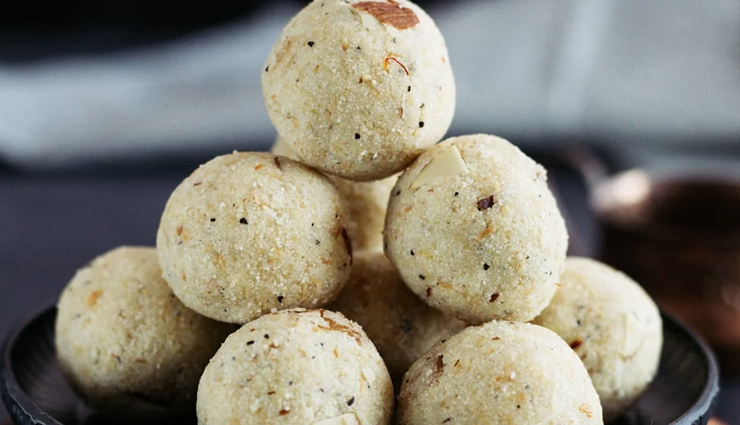
# Rava ladoo
Rava ladoo, also known as suji ladoo, is a popular Indian sweet made from semolina (rava or sooji), sugar, ghee, and flavored with cardamom. These melt-in-your-mouth ladoos are often prepared during festivals like Diwali and can be made quickly with just a few ingredients. Here’s a step-by-step guide to making rava ladoo at home.
Ingredients of Rava ladoo
1 cup semolina (rava or sooji)
3/4 cup powdered sugar
1/4 cup ghee
2 tablespoons grated coconut (optional)
1/4 cup milk
1/4 teaspoon cardamom powder
2 tablespoons chopped nuts: Almonds, cashews, and raisins.
A few saffron strands (optional)
How to Make Rava ladoo
To make rava ladoo, start by heating a heavy-bottomed pan over medium heat and adding a quarter cup of ghee. Once the ghee melts, add one cup of semolina (rava) to the pan and roast it on low heat. Stir continuously to ensure even roasting, and cook until the semolina turns golden brown and emits a fragrant aroma. This should take about 8-10 minutes. Be careful not to burn the semolina.
If you’re using grated coconut, add 2 tablespoons to the pan and roast it along with the semolina for another 2-3 minutes. The coconut adds a subtle sweetness and texture to the ladoos.
Once the semolina and coconut are well roasted, remove the pan from heat and allow the mixture to cool slightly. In a mixing bowl, combine the roasted semolina mixture with three-quarters of a cup of powdered sugar and a quarter teaspoon of cardamom powder. Mix everything well to ensure the sugar and cardamom are evenly distributed.
Next, add 2 tablespoons of chopped nuts (almonds, cashews, and raisins) to the mixture. You can lightly roast the nuts in ghee before adding them for extra flavor.
Gradually add a quarter cup of warm milk to the mixture, a little at a time, and start mixing. The milk helps in binding the ingredients together. Be careful not to add too much milk at once, as it can make the mixture too wet. Mix until the mixture holds together when pressed between your fingers.
Once the mixture is ready, take small portions and shape them into round ladoos using your hands. If the mixture is too dry, you can add a little more milk or ghee to help bind the ladoos.
After shaping all the ladoos, let them rest for a few minutes to firm up. Once set, the rava ladoos are ready to be enjoyed! Store them in an airtight container at room temperature, and they’ll stay fresh for several days.
These rava ladoos are a perfect treat for any occasion, with their rich flavor and delightful texture. Enjoy them as a snack or as a sweet offering during festivals!
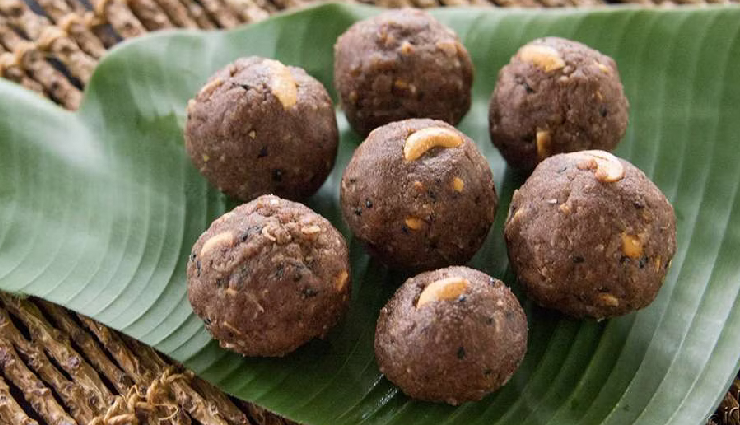
# Ragi rava ladoo
Ragi rava ladoo combines the goodness of ragi (finger millet) with the traditional flavors of rava ladoo, making it a healthier alternative to the classic Indian sweet. This recipe is packed with nutrients and is perfect for those looking to enjoy a wholesome treat.
Ingredients of Ragi rava ladoo
1/2 cup ragi flour (finger millet flour)
1/2 cup semolina (rava or sooji)
3/4 cup powdered sugar
1/4 cup ghee
2 tablespoons grated coconut (optional)
1/4 cup milk
1/4 teaspoon cardamom powder
2 tablespoons chopped nuts: Almonds, cashews, and raisins for crunch.
A few saffron strands (optional)
How to Make Rava ladoo
To prepare ragi rava ladoo, start by heating a heavy-bottomed pan over medium heat. Add a quarter cup of ghee to the pan and let it melt. Once the ghee is hot, add half a cup of semolina (rava) and roast it on low heat, stirring continuously until the semolina turns golden brown and releases a fragrant aroma. This should take about 8-10 minutes. Be sure not to burn the semolina.
Next, add half a cup of ragi flour to the pan with the roasted semolina. Continue roasting the mixture on low heat for another 5-7 minutes, stirring constantly, until the ragi flour is well roasted and combined with the semolina. If you’re using grated coconut, add 2 tablespoons at this stage and roast it for another 2-3 minutes.
Once the mixture is roasted and fragrant, remove the pan from heat and allow it to cool slightly. In a mixing bowl, combine the roasted ragi and semolina mixture with three-quarters of a cup of powdered sugar and a quarter teaspoon of cardamom powder. Mix well to ensure the sugar and cardamom are evenly distributed.
Add 2 tablespoons of chopped nuts (almonds, cashews, and raisins) to the mixture. You can lightly roast the nuts in ghee before adding them for extra flavor and crunch.
Gradually add a quarter cup of warm milk to the mixture, a little at a time, and start mixing. The milk helps in binding the ingredients together. Be careful not to add too much milk at once, as it can make the mixture too wet. Mix until the mixture holds together when pressed between your fingers.
Once the mixture is ready, take small portions and shape them into round ladoos using your hands. If the mixture is too dry, you can add a little more milk or ghee to help bind the ladoos.
After shaping all the ladoos, let them rest for a few minutes to firm up. Once set, the ragi rava ladoos are ready to be enjoyed! Store them in an airtight container at room temperature, and they’ll stay fresh for several days.
These ragi rava ladoos are not only delicious but also packed with the goodness of ragi, making them a perfect treat for any occasion. Enjoy them as a nutritious snack or as a sweet treat during festivals!
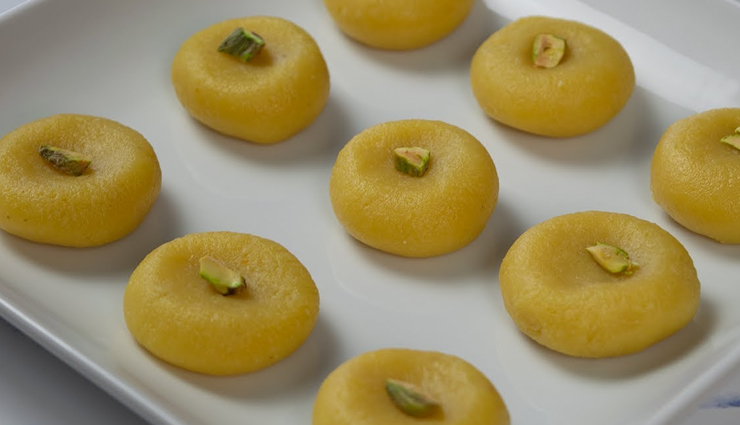
# Kesar badam peda
Kesar Badam Peda is a delightful Indian sweet made from almonds (badam), milk, and flavored with saffron (kesar). This soft, melt-in-your-mouth dessert is perfect for festive occasions or as a special treat. Here's how you can make Kesar Badam Peda at home.
Ingredients of Kesar badam peda
1 cup almonds (badam)
1/2 cup condensed milk
1/4 cup milk
1/4 cup milk powder
2 tablespoons ghee
A few saffron strands (kesar)
1/4 teaspoon cardamom powder
2 tablespoons chopped nuts (optional)
How to Make Rava ladoo
To make Kesar Badam Peda, begin by soaking 1 cup of almonds in hot water for about 30 minutes. Once soaked, peel the almonds and grind them into a smooth paste using 1/4 cup of milk. Make sure the paste is fine and lump-free.
In a heavy-bottomed pan, heat 2 tablespoons of ghee over medium heat. Once the ghee melts, add the almond paste to the pan and sauté it on low heat for about 5-7 minutes, stirring continuously. This helps to cook the almond paste and brings out its rich flavor.
Next, add 1/2 cup of condensed milk to the pan and mix it well with the almond paste. Continue cooking the mixture on low heat, stirring constantly to prevent it from sticking to the pan.
Add 1/4 cup of milk powder to the mixture and stir until it is well incorporated. The milk powder adds extra richness and helps bind the peda mixture. Cook the mixture for another 5-7 minutes until it thickens and starts to leave the sides of the pan.
Once the mixture has thickened, add the saffron milk (a few saffron strands soaked in 2 tablespoons of warm milk) and 1/4 teaspoon of cardamom powder. Mix well and cook for another 2 minutes until the saffron is evenly distributed and the mixture becomes fragrant.
Turn off the heat and let the mixture cool slightly until it is cool enough to handle. Once cooled, take small portions of the mixture and shape them into small, round pedas using your hands. You can also press the center slightly to create an indentation, which can be garnished with chopped nuts or a single saffron strand.
Let the pedas set for a few minutes, and they are ready to serve. Kesar Badam Peda can be stored in an airtight container at room temperature for a few days or refrigerated for longer shelf life.
Enjoy these rich, aromatic Kesar Badam Pedas as a festive treat or a special dessert after a meal!





